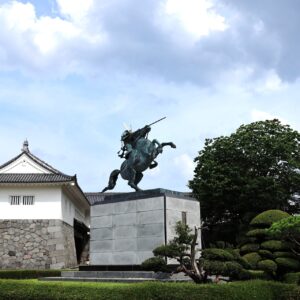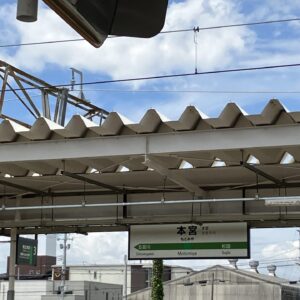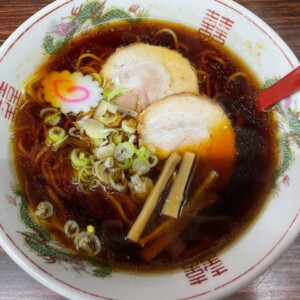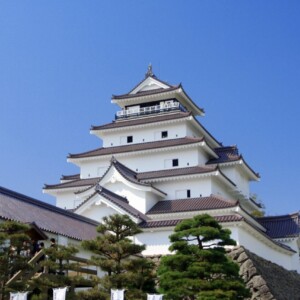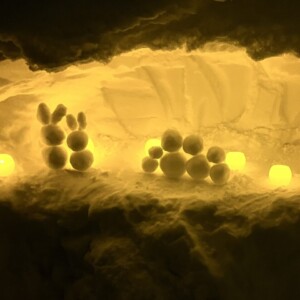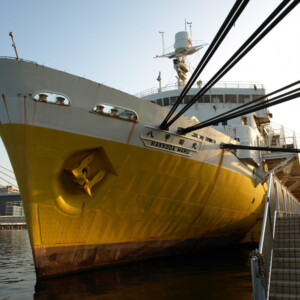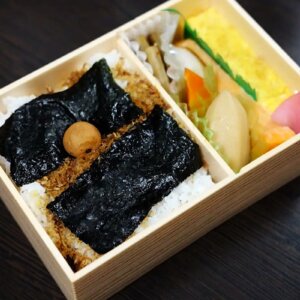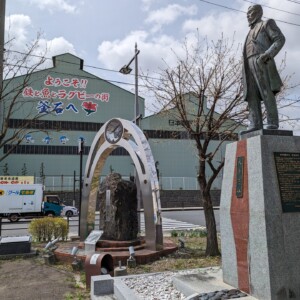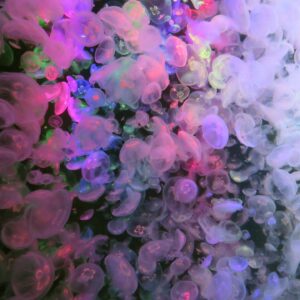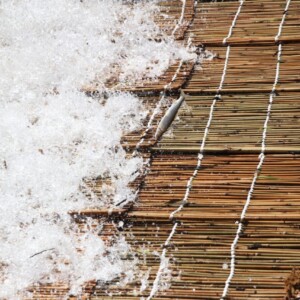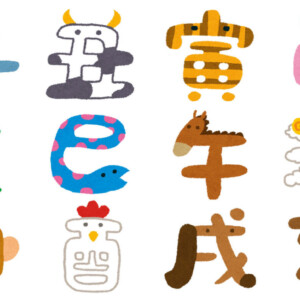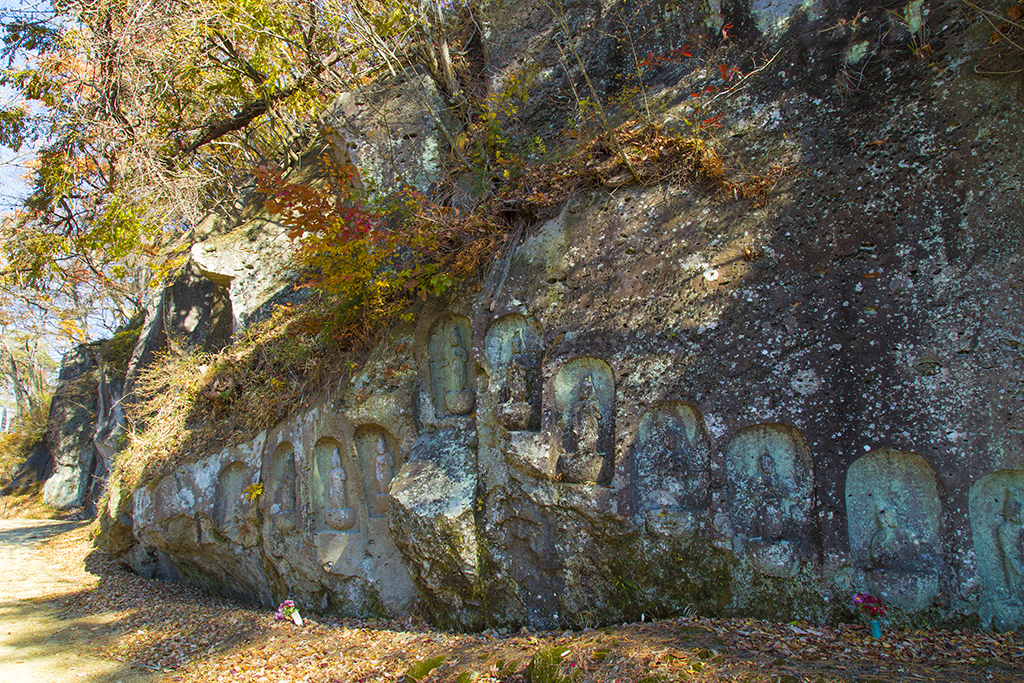
A tour of the 33 remaining Kannon in Minami Aizu. "Thirty-three Kannon" certified as a Japanese Heritage Site [Fukushima Prefecture]
table of contents
- 1 The Thirty-Three Kannon Tour dates back to the Nara period when it was established by Hasedera Temple in Nara.
- 2 "Aizu Thirty-Three Kannon" was started by Masayuki Hoshina, the lord of Aizu domain during the Edo period.
- 3 A number of 33 Kannon statues were established in each area in Aizu.
- 4 Minamiaizu's unique 33 Kannon temple "Mikurairi 33 Kannon"
- 5 There are many cultural properties, and with the exception of a few, you can also visit by car.
- 6 Another 33 Kannon statues in Minami Aizu, Nagata Saikoku 33 Kannon, where 33 stone statues of Kannon are lined up for about 1km.
There are many ``33 Kannon'' left in the Aizu region. It became a stronghold of people's hearts. The ``Thirty-Three Kannon'' refers to 33 temples where Kannon is enshrined, numbered from 1 to 33, and visited in order. Temples are called ``fudasho,'' where you put the amulets you have brought with you and write your wishes on them, and receive a goshuin seal from the temple as a souvenir. It could take several months to visit the Thirty-Three Kannons, but people saved money and enjoyed the trip.
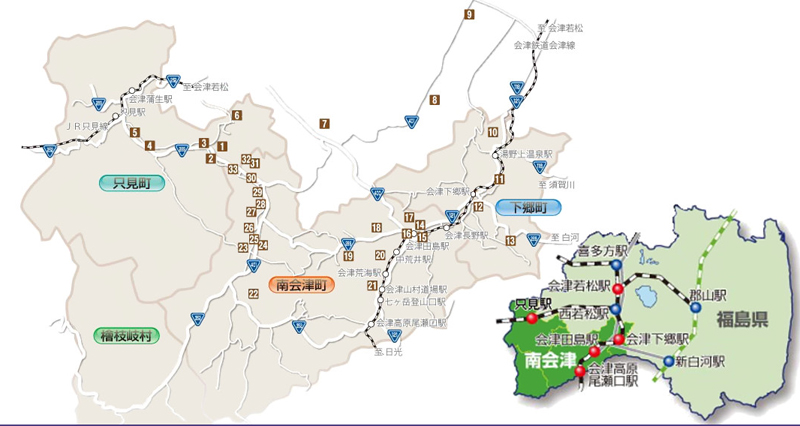
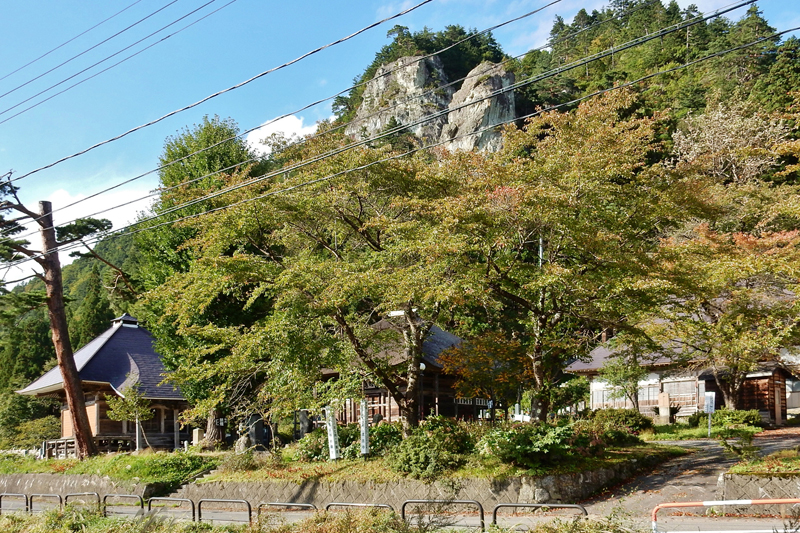
The Thirty-Three Kannon Tour dates back to the Nara period when it was established by Hasedera Temple in Nara.
The Thirty-Three Kannon Tour enshrines the Kannon, which was said to transform into 33 forms and save people by Tokudo Shonin, who founded Hasedera Temple in Yamato Province (Sakurai City, Nara Prefecture) in the early Nara period. It is said that it began when 33 temples were designated as sacred sites.
The Thirty-Three Kannon Tour has spread throughout the country over many years. During the Edo period, the Saigoku Thirty-Three Temples Pilgrimage (Nara Prefecture, Osaka Prefecture, Kyoto Prefecture, Shiga Prefecture, Hyogo Prefecture, Wakayama Prefecture/Hasedera Temple is No. 8/Japan Heritage) and Bando Thirty-three Kannon Temples (Kanagawa Prefecture) 400, including those that cover a wide area such as Saitama Prefecture, Tokyo, Gunma Prefecture, Tochigi Prefecture, Ibaraki Prefecture, Chiba Prefecture / Sensoji Temple is No. 13), and those that cover a small area such as Chichibu 34 Kannon Sacred Sites (Saitama Prefecture). It is said that there was a sacred place that was more than just a place.
"Aizu Thirty-Three Kannon" was started by Masayuki Hoshina, the lord of Aizu domain during the Edo period.
The ``Aizu Thirty-Three Kannon'' was established by Masayuki Hoshina, who became the first lord of the Aizu domain in 1643 during the Edo period. This made it possible to tour the 33 Kannon statues within the territory so that there was no need to go on a pilgrimage. As a result, the people of the domain did not have to spend money on long trips, and the domain was able to prevent large amounts of money from flowing outside the domain.
``Aizu Thirty-Three Kannon'' originally centered on Wakamatsu (Aizu Wakamatsu), where the castle was located, and designated the thirty-three Kannon temples in the Kita-Aizu region as the Thirty-Three Kannon Temples. It became extremely popular as an excursion for both socializing and entertainment, especially for women in rural areas, who originally believed in Kannon.
A number of 33 Kannon statues were established in each area in Aizu.
The first ``Aizu Thirty-Three Kannon'' were gathered in Kita-Aizu, so there was a growing momentum from the far-off, mountainous Minami-Aizu region to create a local 33 Kannon temple, and in 1698 In 2007, the ``Okairiri Thirty-Three Kannon Temples'' were established, which tour the thirty-three Kannon statues in the Minamiaizu region.
“Mikuraniri” comes from the name of the Minami-Aizu region, centered on Tajima (Tajima, Minamiaizu Town), which was under direct control of the Shogunate in the early Edo period.
There are many other 33 Kannon statues in the Aizu region, such as the ``33 Inawashiro Kannon,'' ``33 Kubota Kannon,'' ``Nagata Saikoku 33 Kannon,'' and ``Sairyuji Otome 33 Kannon.'' Most of the areas were covered, and people enjoyed the pilgrimage to the Thirty-Three Kannons.
These 33 Kannon statues, along with the surrounding temples, roads, and post towns such as Ouchi-juku, have been certified as a Japanese heritage site, ``Aizu's 33 Kannon Tour: Aizu's Culture Seen Through Pilgrimage''.
Minamiaizu's unique 33 Kannon temple "Mikurairi 33 Kannon"
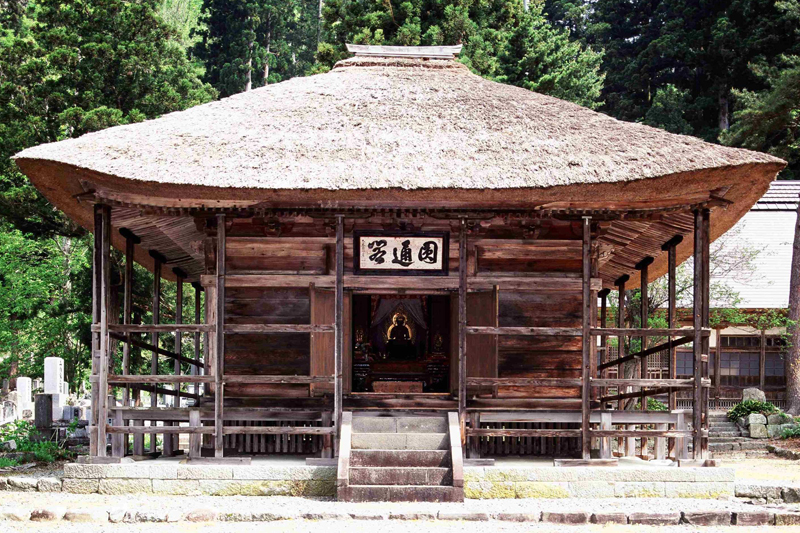
The ``33 Kannon in Mikuran'' is located in Tadami-cho, the deepest part of Minami-Aizu, with ``Johoji Kannon-do'' as the first temple, and goes clockwise around Aizu Sakashita-cho, Aizumisato-cho, Shimogo-cho, and Minami-Aizu-cho. There are 33 Kannon-do halls spread over five towns that have been designated as temples. The 33rd temple is ``Izumida Senkodo,'' and we will soon return to the 1st temple, ``Jihoji Kannondo.''
The entire journey of the ``Mikurairi Thirty-Three Kannon'' is said to be 44 ri and 31 towns, and is approximately 180 km long. Of the 33 Kannon-do temples, the 8th temple, ``Higashiogi Kannon-do'', currently does not have a building due to disasters and other factors. In addition, the 20th temple, Kawashima Iwato-do, is located on a cliff and cannot be climbed. You can visit Kannondo other than these two places.
Unfortunately, it seems that you cannot receive Goshuin stamps at this time, except at the 10th temple, Ono Kannon-do.
There are many cultural properties, and with the exception of a few, you can also visit by car.
The ``Mikurairi Thirty-Three Kannon'' contains many extremely valuable buildings and Buddhist statues that have been designated as important cultural properties of the country.
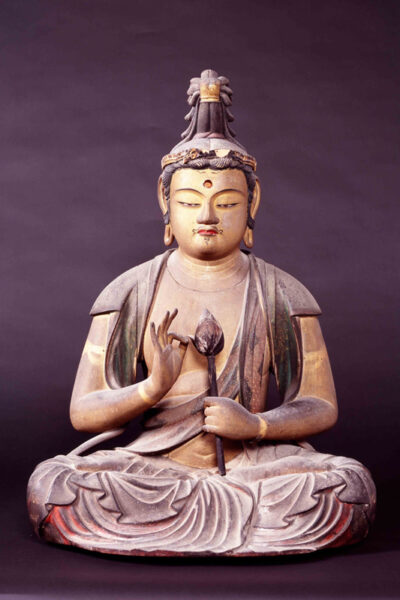
The first temple, ``Jihoji Kannon-do,'' is a pure Tang-style building that is said to have been built in the early Momoyama period. It's architecture. ``Johoji Kannon-do'' has been designated as a national important cultural property. The principal image of Johoji Temple, the wooden seated statue of Sho Kannon Bodhisattva, is an important cultural property of Fukushima Prefecture.
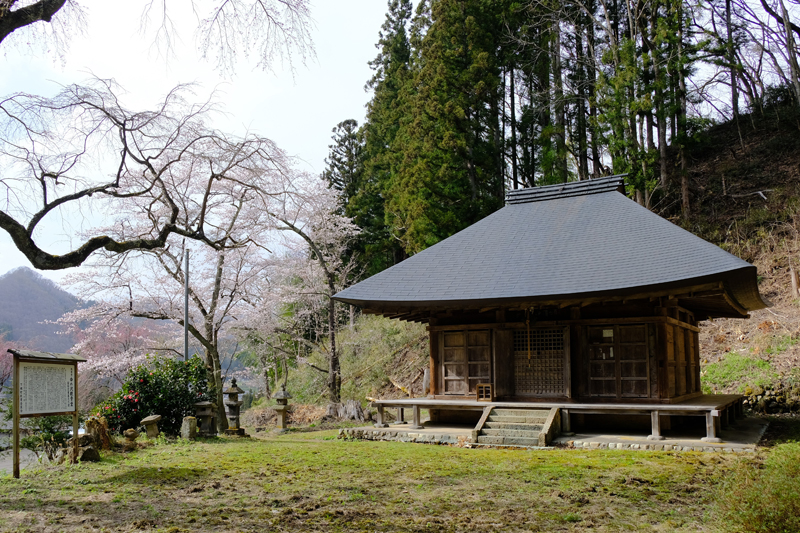
The 11th temple, Nakanosawa Kannon-do, is a Kannon-do hall located at Kyokudenji Temple, and is said to have been rebuilt during the Muromachi period. It is a purely Japanese-style building with a very beautiful curved roof. National important cultural property.
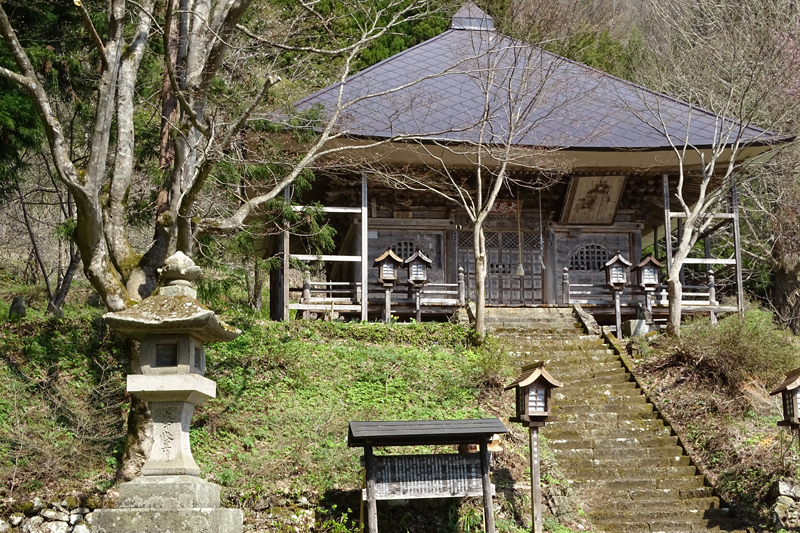
In addition, the 10th temple "Ono Kannon-do" has a crocodile mouth (an important cultural property of Fukushima Prefecture), an votive tablet (a cultural property designated by Shimogo Town), the 14th temple "Yakushiji" has a wooden seated statue of Amida Nyorai, and a wooden standing statue of Yakushi Nyorai. (both important cultural properties of Fukushima prefecture), No. 15 temple "Tokusho-ji" main hall, kuri, Konpira-do (registered tangible cultural property of the country), No. 19 temple "Omamewata Nansenji Kannon-do" tower gate (Important Cultural Property of Fukushima Prefecture), the 24th Temple Betto Zendoji “Furumachi Eiyo-do” wooden seated statue of Amida Nyorai (Fukushima Prefectural Important Cultural Property), the 29th Temple “Tokisu Shodan-do” The wooden Nyorai-shaped seated statue (Tangible Cultural Property designated by Minamiaizu Town) has been designated as a cultural property.
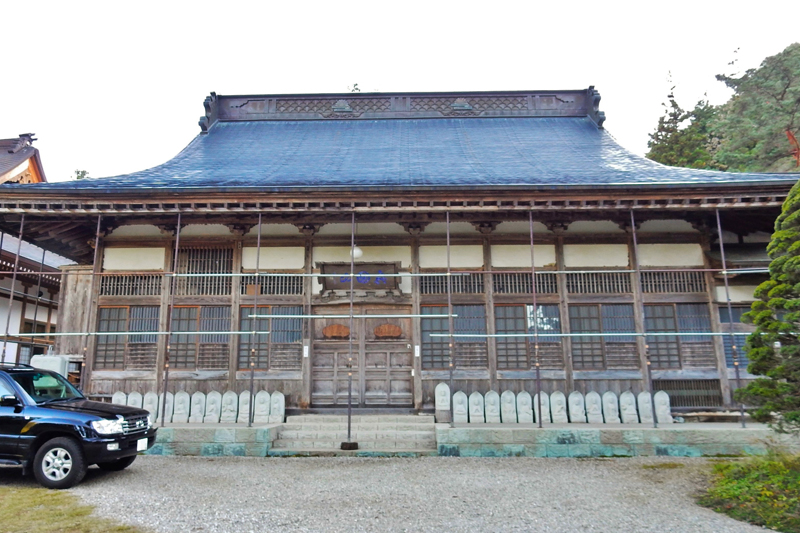
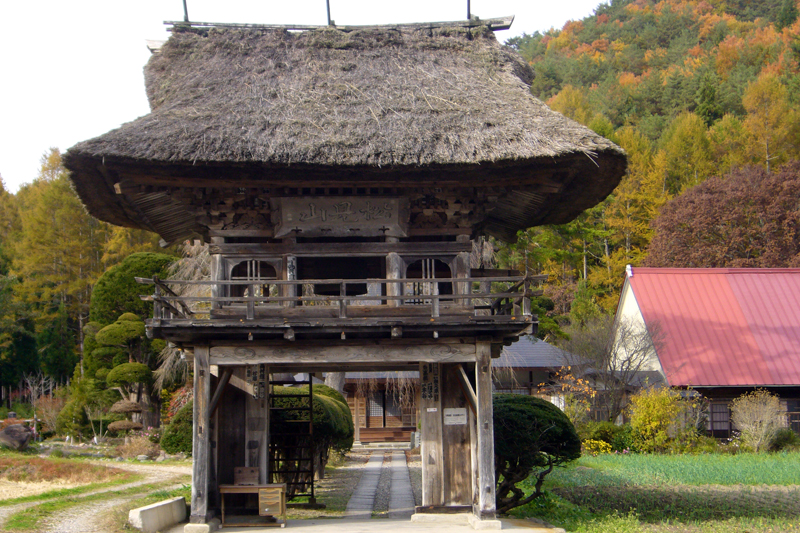
Another 33 Kannon statues in Minami Aizu, Nagata Saikoku 33 Kannon, where 33 stone statues of Kannon are lined up for about 1km.
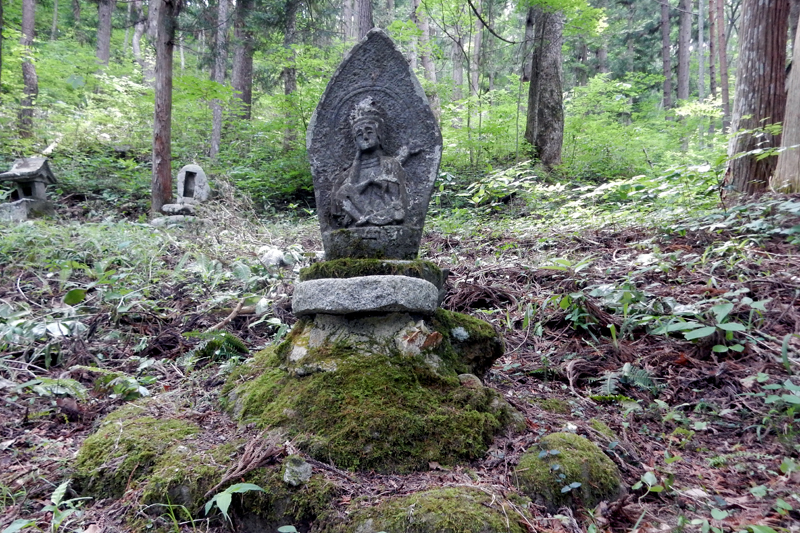
There is another 33 Kannon in Minamiaizu. ``Nagata Saikoku Thirty-Three Kannon'', 33 stone statues of Kannon are lined up along the 1km approach to Sagi Shrine in the Nagata district of Minamiaizu Town. It all began in the early 1800s, when a wealthy local enshrined a Kannon stone Buddha within the precincts of Sagi Shrine in hopes of bringing peace to the area.Since then, two generations of the same family have continued to carve a total of 33 stone statues and place them on the approach to the shrine. It was. It was completed in 1878 (Meiji 11), and since then, many worshipers have visited the shrine, believing that just by walking around the approach, they can gain the same merit as a pilgrimage to the Thirty-three Kannon Temples.
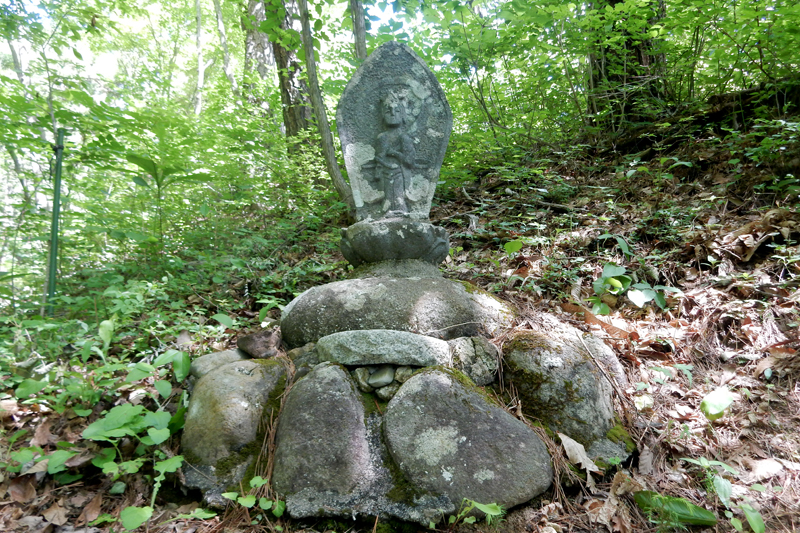
The ``33 Aizu Kannon'' including the ``33 Kannon in Mikuraniri'' and the ``33 Kannon in Nagata Saikoku'' are registered as Japanese heritage sites.
Information
Best Aizu Project Council
- Phone number: 0242-39-1251
- URL: Japan Heritage – Tour of the 33 Kannon in Aizu
Come on, Minamiaizu
- Phone number: 0241-62-5205 (Fukushima Prefecture Minamiaizu Regional Promotion Bureau)
- URL: Come on Minamiaizu
Mikuraniri Thirty-Three Kannon <Information>
The first temple Yanatori Johoji Temple
- Address: 1864-1 Butschi, Yanatori, Tadami-machi, Minamiaizu-gun, Fukushima Prefecture
- Phone number: 0241-82-5320 (Tadami Town Board of Education)
- Temple: Johoji Temple
- Sect: Soto sect
- Principal image: Seated Seated Kannon statue (Fukushima Prefecture Important Cultural Property)
- Kannondo: (16th century/Nationally designated important cultural property)
Second temple, Shionoki Yaotome-do (Shionomata Yaotome-do)
- Address: Yaotome, Shionogi, Tadami-machi, Minamiaizu-gun, Fukushima Prefecture
- Phone number: 0241-82-5320 (Tadami Town Board of Education)
- Temple: Betto Myounji Temple
- Sect: Jodo Shinshu
- Principal image: St. Kannon standing statue
Third Temple Kobayashi Shinpukuji Temple (Kobayashi Shinpukuji)
- Address: 881 Kobayashi Nanajokari, Tadami-machi, Minamiaizu-gun, Fukushima Prefecture
- Phone number: 0241-82-5320 (Tadami Town Board of Education)
- Temple: Shinpukuji
- Sect: Shingon sect
- Principal image: St. Kannon standing statue
Fourth Temple: Kurotani Ryusenji Temple
- Address: 2268 Uenoyama, Kuroya, Tadami-machi, Minamiaizu-gun, Fukushima Prefecture
- Phone number: 0241-82-5320 (Tadami Town Board of Education)
- Temple: Takisenji Temple
- Sect: Shingon sect
- Principal image: St. Kannon standing statue
5th Temple Narado Narado-do
- Address: Kamimikata, Narado, Tadami-machi, Minamiaizu-gun, Fukushima Prefecture
- Phone number: 0241-82-5320 (Tadami Town Board of Education)
- Temple: Narado-do
- Sect: Shingon sect
- Principal image: St. Kannon standing statue
6th Temple Fuzawa Ukishimado (Fuzawa Ukishimado)
- Address: One-way, Nunozawa, Tadami-machi, Minamiaizu-gun, Fukushima Prefecture
- Phone number: 0241-82-5320 (Tadami Town Board of Education)
- Temple: Ukishimado
- Sect: Soto sect
- Principal image: Nyoirin Kannon seated statue
Seventh Temple Jigenzan Kannonji Temple
- Address: 723 Baba, Sakura, Showa Village, Onuma District, Fukushima Prefecture
- Phone number: 0241-57-3700 (Showa Village Tourism Association)
- Temple: Jigenzan Kannonji (founded in 1616)
- Sect: Soto sect
- Principal image: Eleven-faced Kanzeon Great Bodhisattva
- Common name: Sakura Kannonji Temple
8th Temple Higashiogi Kannondo (Higashiogi Kannondo) *Collapsed due to deterioration
- Temple: Betto Chosenji Temple
- Address: Higashiogi, Aizumisato-cho, Onuma-gun, Fukushima Prefecture
- Phone number: 0242-56-4882 (Aizumisato Town Tourism Association)
Ninth temple Nagaino Kannondo
- Principal image: Holy Kannon Bodhisattva
- Address: 1545 Yagatsuta, Nagaino, Aizumisato-cho, Onuma-gun, Fukushima Prefecture
- Phone number: 0242-56-4882 (Aizumisato Town Tourism Association)
Tenth temple Ono Kannondo (Ono Kannondo)
Address: Yunokami, Ihira-ko, Shimogo-machi, Minamiaizu-gun, Fukushima Prefecture
- Phone number: 0241-69-1144 (Shimogo Town Tourism Association)
- Temple: Betto Manganji Temple
- Sect: Soto sect
- Principal image: Eleven-faced thousand-armed Kannon standing statue
- Cultural properties: Waniguchi (Fukushima prefecture important cultural property), votive tablets (designated cultural property of Shimogo Town)
The 11th temple Nakanosawa Kannondo (Nakanosawa Kannondo)
- Address: 228 Nakazuma Kannon-mae, Shimogo-machi, Minamiaizu-gun, Fukushima Prefecture
- Phone number: 0241-69-1144 (Shimogo Town Tourism Association)
- Temple: Betto Asahita Temple
- Sect: Shingon sect
- Principal image: St. Kannon standing statue
- Kannondo: Muromachi period (National Important Cultural Property)
- Cultural properties: Waniguchi (Fukushima prefecture important cultural property), votive tablets (designated cultural property of Shimogo Town)
Twelfth Temple: Asahita Temple Kannondo (formerly Chofukuji Temple)
- Address: Uenohara, Shio, Shimogo-machi, Minamiaizu-gun, Fukushima Prefecture
- Phone number: 0241-69-1144 (Shimogo Town Tourism Association)
- Temple: Betto Asahita Temple
- Sect: Shingon sect
- Principal image: Separate standing statue of Sho Kannon
- Other name: Shiono Kannondo
The 13th Temple: Dakekannondo
- Address: Minamikurasawa, Shimogo-cho, Minamiaizu-gun, Fukushima Prefecture
- Phone number: 0241-69-1144 (Shimogo Town Tourism Association)
- Temple: Betto Gakuenji Temple
- Sect: Shingon sect
- Principal image: St. Kannon standing statue
- *Erected by Denzaka Uedamuramaro
14th Temple Tajima Yakushiji Temple
- Address: 3872-1 Honmachi Ko, Tajima, Minamiaizu-cho, Minamiaizu-gun, Fukushima Prefecture
- Phone number: 0241-62-3000 (Minamiaizu Town Tourism and Products Association)
- Temple: Yakushiji Temple
- Sect: Shingon sect
- Principal image: Nyoirin Kannon seated statue
- Cultural properties: Wooden seated statue of Amida Nyorai (Fukushima prefecture important cultural property), Yakushi Nyorai standing statue (Fukushima prefecture important cultural property)
- *Prayer place for generations of the Naganuma clan
15th Temple Tajima Tokushoji Temple
- Address: 2970 Teramaekou, Tajima, Minamiaizu-cho, Minamiaizu-gun, Fukushima Prefecture
- Phone number: 0241-62-3000 (Minamiaizu Town Tourism and Products Association)
- Temple: Tokushoji Temple
- Sect: Soto sect
- Principal image: St. Kannon seated statue
- Cultural properties: Main hall, vault, Konpirado (nationally selected tangible cultural property)
- *Naganuma clan's family temple
16th Temple Tajima Jionji Temple
- Address: 3707 Gomachi Ko, Tajima, Minamiaizu-cho, Minamiaizu-gun, Fukushima Prefecture
- Phone number: 0241-62-3000 (Minamiaizu Town Tourism and Products Association)
- Temple: Jionji Temple
- Sect: Shingon sect
- Principal image: Thousand-armed Kannon seated statue
17th temple Koya Yakushiji Kannondo (Koya Yakushiji Kannondo)
- Address: Takano, Minamiaizu-cho, Minamiaizu-gun, Fukushima Prefecture
- Phone number: 0241-62-3000 (Minamiaizu Town Tourism and Products Association)
- Temple: Betto Yakushiji Temple
- Sect: Shingon sect
- Principal image: Seated horse-headed Kannon statue
The 18th Temple: Obisawa Jōrakuin Kannondo
- Address: Gonodo, Kanaizawa, Minamiaizu-cho, Minamiaizu-gun, Fukushima Prefecture
- Phone number: 0241-62-3000 (Minamiaizu Town Tourism and Products Association)
- Temple: Betto Jōrakuin
- Sect: Shingon sect
- Principal image: St. Kannon seated statue
- *A statue of Maria Kannon is enshrined in Jōraku-in Temple/Goddess of matchmaking
19th temple Mamewata Nansenji Kannondo (Mamewata Nansenji Kannondo)
- Address: Shizukawa Kamisawadaotsu, Minamiaizu-cho, Minamiaizu-gun, Fukushima Prefecture
- Phone number: 0241-62-3000 (Minamiaizu Town Tourism and Products Association)
- Temple: Betto Nansenji Temple
- Sect: Jodo Shinshu
- Principal image: St. Kannon seated statue
- Cultural property: Nansenji Kannondo tower gate (Fukushima prefecture important cultural property)
20th temple Kawashima Iwato-do (Kawashima Iwato-do) *Visit not allowed
- Address: Fujio, Minamiaizu-cho, Minamiaizu-gun, Fukushima Prefecture
- Phone number: 0241-62-3000 (Minamiaizu Town Tourism and Products Association)
The 21st Temple Itozawa Ryufukuji Temple
- Address: 1880 Iheira, Itozawa, Minamiaizu-cho, Minamiaizu-gun, Fukushima Prefecture
- Phone number: 0241-62-3000 (Minamiaizu Town Tourism and Products Association)
- Temple: Ryufukuji Temple
- Sect: Shingon sect
- Principal image: Seated horse-headed Kannon statue
22nd Temple Shionohara Senkoji Temple
- Address: 528 Konbusawa, Shionohara, Minamiaizu-cho, Minamiaizu-gun, Fukushima Prefecture
- Phone number: 0241-62-3000 (Minamiaizu Town Tourism and Products Association)
- Temple: Senkoji Temple
- Sect: Jodo Shinshu
- Principal image: Thousand-armed Kannon standing statue
23rd Temple Koshio Kannondo
- Address: Maruyama, Oshio, Minamiaizu-cho, Minamiaizu-gun, Fukushima Prefecture
- Phone number: 0241-62-3000 (Minamiaizu Town Tourism and Products Association)
- Temple: Koshio Kannondo
- Sect: unknown
- Principal image: Nyoirin Kannon seated statue
24th Temple Furumachi Zendoji Eikodo
- Address: 73 Higashiigidaira, Furumachi, Minamiaizu-cho, Minamiaizu-gun, Fukushima Prefecture
- Phone number: 0241-62-3000 (Minamiaizu Town Tourism and Products Association)
- Temple: Betto Zendoji
- Sect: Jodo sect
- Principal image: Wooden seated Amida Nyorai statue (Fukushima Prefecture Important Cultural Property)
25th Temple Furumachi Shokokuji Temple (Furumachi Shokokuji)
- Address: 2025 Furumachi Onuma, Minamiaizu-cho, Minamiaizu-gun, Fukushima Prefecture
- Phone number: 0241-62-3000 (Minamiaizu Town Tourism and Products Association)
- Temple: Shokokuji Temple
- Sect: Jishu
- Principal image: St. Kannon standing statue
26th temple Aoyagi Kannondo (Aoyagi Kannondo)
- Address: Aoyagi, Minamiaizu-cho, Minamiaizu-gun, Fukushima Prefecture
- Phone number: 0241-62-3000 (Minamiaizu Town Tourism and Products Association)
- Temple: Aoyagi Kannondo
- Sect: unknown
- Principal image: St. Kannon seated statue
27th Temple Ohashi Shimizudo
- Address: Ohashi, Minamiaizu-cho, Minamiaizu-gun, Fukushima Prefecture
- Phone number: 0241-62-3000 (Minamiaizu Town Tourism and Products Association)
- Temple: Ohashi Kiyomizudo
- Sect: unknown
- Principal image: Thousand-armed Kannon standing statue
28th Temple Yamaguchi Yamazakido (Yamaguchi Yamazakido)
- Address: Yamaguchi, Minamiaizu-cho, Minamiaizu-gun, Fukushima Prefecture
- Phone number: 0241-62-3000 (Minamiaizu Town Tourism and Products Association)
- Temple: Yamaguchi Yamazakido (Betto Anshoji Temple)
- Sect: Jodo Shinshu
- Principal image: Nyoirin Kannon seated statue
29th Temple Tonosu Matsuyodo
- Address: Muranaka Tokosu, Minamiaizu-cho, Minamiaizu-gun, Fukushima Prefecture
- Phone number: 0241-62-3000 (Minamiaizu Town Tourism and Products Association)
- Temple: Tokisu Shodando
- Sect: unknown
- Principal image: Juntei Kannon seated statue
- Cultural property: Wooden Nyorai-shaped seated statue (Tangible cultural property designated by Minamiaizu Town)
30th Temple Onoshima Iwato-do
- Address: Onoshima, Minamiaizu-cho, Minamiaizu-gun, Fukushima Prefecture
- Phone number: 0241-62-3000 (Minamiaizu Town Tourism and Products Association)
- Temple: Onoshima Iwado-do
- Sect: unknown
- Principal image: St. Kannon standing statue
31st Temple Toyama Toyama-do (Tomiyama Tomiyama-do)
- Address: Toyama, Minamiaizu-cho, Minamiaizu-gun, Fukushima Prefecture
- Phone number: 0241-62-3000 (Minamiaizu Town Tourism and Products Association)
- Temple: Tozando (Betto Fudoin)
- Sect: Shingon sect
- Principal image: St. Kannon standing statue
32nd Temple Shimoyama Kannonji Temple
- Address: Shimoyama, Minamiaizu-cho, Minamiaizu-gun, Fukushima Prefecture
- Phone number: 0241-62-3000 (Minamiaizu Town Tourism and Products Association)
- Temple: Shimoyama Kannon-do (Betto Kannon-ji)
- Sect: Shingon sect
- Principal image: St. Kannon seated statue
33rd Temple Izumida Senko-do
- Address: Teramachi, Izumida, Minamiaizu-cho, Minamiaizu-gun, Fukushima Prefecture
- Phone number: 0241-62-3000 (Minamiaizu Town Tourism and Products Association)
- Temple: Izumida Senkodo
- Sect: unknown
- Principal image: Thousand-armed Kannon seated statue



![Nagai, the former Yonezawa domain boat transport town that flourished through the Mogami River [Yamagata Prefecture] 71_Mogami River Bridge (Flower Nagai Line) 2](https://jp.neft.asia/wp-content/uploads/2023/05/1387761f176bfc409893953e0b93371f-150x150.jpg)
![[Kamaishi City, Iwate Prefecture] “Kamaishi Daikannon” is a giant Buddha that watches over Kamaishi Bay, one of the three great giant Buddhas in Tohoku giant buddha](https://jp.neft.asia/wp-content/uploads/2024/05/bd805e9fc2bb98f1f224d28278274c23-pdf-150x113.jpg)
![A report on the experience of "Whiskey Collection Koriyama," Tohoku's first whiskey event! [Fukushima Prefecture] Whiskey Collection Koriyama](https://jp.neft.asia/wp-content/uploads/2024/10/IMG_0751-EDIT-150x150.jpg)
![The delicacy "Anko" is a delicious winter taste on the beach! [Fukushima Prefecture] Monkfish](https://jp.neft.asia/wp-content/uploads/2022/02/2054097_m-150x150.jpg)
!["Negaseki" is one of the three ancient Oshu sekies that surpasses Minamoto Yoshitsune and Matsuo Basho [Tsuruoka City, Yamagata Prefecture] 3809167_m](https://jp.neft.asia/wp-content/uploads/2023/02/3809167_m-150x150.jpg)
![What is "disc dumplings" in Fukushima City? Introducing recommended shops and history [Fukushima Prefecture] Disc Dumplings 1](https://jp.neft.asia/wp-content/uploads/2023/03/31485117_m-150x150.jpg)
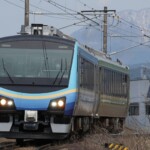
![Okuaizu Shoten is born where you can "know, buy, and experience" Okuaizu! [Fukushima Prefecture] Okuaizu store](https://jp.neft.asia/wp-content/uploads/2024/07/sub6-150x150.jpg)
